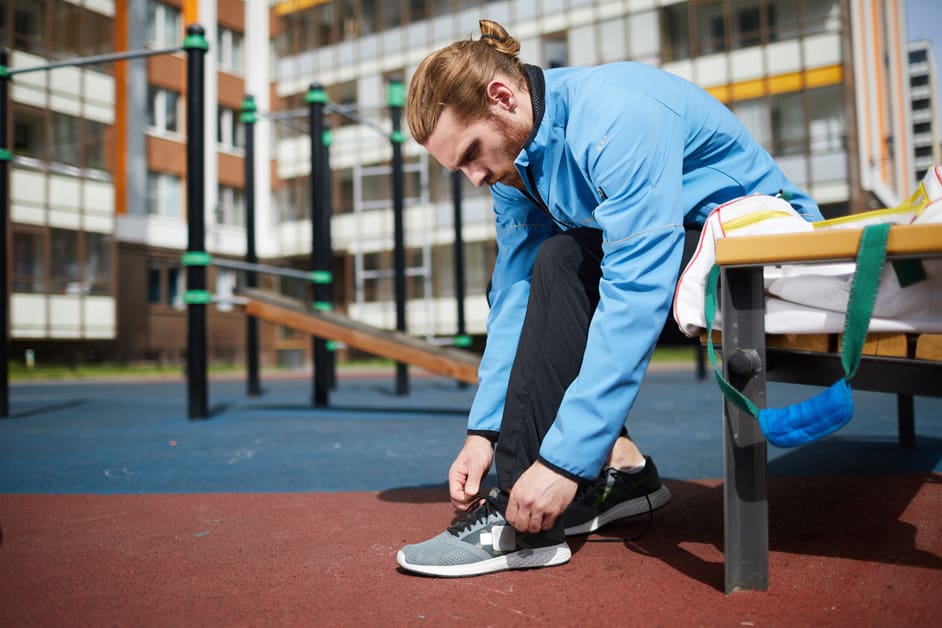Introduction
Knee osteoarthritis afflicts millions across the globe. Symptoms? Pain, stiffness, and swelling. Sadly, no cures exist. But there’s hope! Wearing the right shoes can reduce discomfort and decrease flare-ups. We’ll review the best shoes for people with knee osteoarthritis. Sneakers? Sandals? All will be revealed!
What is Knee Osteoarthritis?
Knee osteoarthritis is one of the most frequent kinds of arthritis. It is a degenerative condition that affects the cartilage and bones in the joints. Symptoms include pain, swelling, tenderness, and stiffness. It can affect people of any age, but is more common in adults over 45. This condition can considerably reduce mobility and make everyday tasks hard.
Treatments for knee osteoarthritis vary, from medications to lifestyle adjustments like working out and altering diet. Also, finding shoes that provide adequate support and comfort when walking can help lessen symptoms of knee osteoarthritis.
Symptoms of Knee Osteoarthritis
Knee Osteoarthritis (OA) is a common form of arthritis. Around 25 million Americans have it, according to the CDC. It’s a chronic and progressive joint disease. Cartilage in the knee joint breaks down, leading to stiffness, swelling and pain.
Symptoms may include:
- Difficulty walking because of pain or less range of motion
- A grinding feeling when you move your knee
- Swelling or stiffness after resting
- Popping or creaking noises from the knee
- Gradual decrease in muscle strength around the joint.
Unfortunately, there is no cure for OA. But, lifestyle changes like exercise, weight loss, and arthritis medications can help manage it. Shoes with good arch support and cushioning soles are also important. High insoles or orthotics may be needed if you have leg length issues or need extra foot support. Let’s look at some of the best shoes for OA symptoms!
Types of Shoes
Knee Osteoarthritis sufferers have many shoe choices. Shock-absorbing sneakers, supportive shoes with a rocker bottom, sandals with arch support, and slip-on shoes with a wide toe box are all options. Each has its own advantages and disadvantages in terms of comfort and support. What do they offer? Let’s find out!
Motion Control Shoes
Motion control shoes limit pronation when walking, reducing stress on feet and knees. They have a low-top design and firmer midsole than cushioning or stability shoes. Outsole materials include rubber, TPU and carbon rubber pads.
They are particularly good for people with knee osteoarthritis. They also provide extra support for longer toes and wider feet, and extra protection on uneven surfaces.
For different activities, motion control shoe designs are:
- Daily use: Comfort is a priority as they should cushion everyday walking.
- Competitive sports: High performance materials optimize arch support and keep joints in proper alignment.
- Outdoor use: Harder elements can be navigated safely with rigid construction and dense outer sole design.
Cushioned Shoes
Cushioned shoes are great for those with knee osteoarthritis. They provide extra padding and support in the sole. This reduces shock and increases comfort.
The midsole should have two material layers; a soft foam, gel or air cushion, plus a firmer foam. There should be arch support or room for orthotic inserts.
Choose shoes specifically for chronic knee pain. Look for cushioned ‘orthopedic’ or ‘therapeutic’ shoe designs. These offer good heel cushioning, stability and support. Popular styles include sneakers, running shoes and sandals.
Stability Shoes
Stability shoes give extra support to the midsole. This helps protect joints from the shock of impact. The best stability shoes for people with knee osteoarthritis have stability features with cushioning. They can reduce pain and discomfort when walking, running or standing.
Design of stability shoes gives pronation and supination control. This supports feet, ankles and joints during any activity. It gives more consistent foot contact in both directions of movement.
High-quality stability shoes should have:
- An anchor system with multiple densities of foam to bridge the heel and forefoot.
- A well-constructed heel counter for ankle joint protection.
- Strong tread depth for grip on different surfaces.
- Deep flex grooves in the midsole for natural motion.
- Lightweight upper material so you can move freely.
- Strategically placed cushioning in key areas for impact protection.
- Roomy toe box for toes to move comfortably.
Benefits of Wearing the Right Shoes
Right shoes are key to easing knee osteoarthritis symptoms. They supply support, absorb shock, and give extra cushioning. This lessens the pressure your joints get when you walk or run.
Let’s explore further how right shoes benefit those with knee osteoarthritis:
Improved Posture
Having the right shoes for daily activities can boost your posture, balance and overall health. Shoes with a suitable heel height, arch support and firm shanks are vital for proper alignment of the knees, hips, back and spine. Shoes that fit you well also help to relieve pressure points on your heels, toes, ankles and arches, while providing cushioning during walking or running.
Support shoes often contain features that can be beneficial:
- Shock absorption
- Non-skid outer soles
- Breathable materials
These can help with good balance during activities like walking or running, and stop mistakes caused by wearing the wrong shoes. Wearing supportive shoes that fit correctly can result in better posture and balance during physical activity and everyday tasks.
Reduced Pain
The correct shoes are essential for reducing pain if you have knee osteoarthritis. Look for shoes with cushioning soles, a firm heel counter, and arch support. Studies show shoes tailored to walking difficulties can help with knee osteoarthritis pain.
High quality running and walking shoes have cushioning and shock absorption to defend the feet from ground contact. Shoes tailored to knee osteoarthritis have extra cushioning and firmer heel counters.
Insoles or orthotics can reduce pain and improve comfort. They also help align the bones of your feet and distribute weight off painful areas. Orthotics can also ease pressure from bony prominences on hard surfaces.
Increased Stability
Having good support and stability in your shoes is essential for those with knee osteoarthritis. Wearing the wrong type of shoe could increase pain and reduce activity. Studies prove that proper shoe stability can reduce pressure on the knee joint, plus provide shock absorption.
The most supportive shoes for knee osteoarthritis are:
- Sole designed to give arch support and stability
- Firm heel counter for extra ankle and heel protection
- Visceral outsole with extra tread or cushioning
- High shock absorption
- Good ankle mobility
Choosing the right shoes helps stay active and have a better quality of life, despite the arthritis. Look for shoes made for walking and sports like running or tennis. Make sure they fit well, provide cushioning and promote healthy gait. Footwear is important for people with osteoarthritis – it can make the difference between living in pain or in comfort.
Other Considerations
Choosing the top shoes for knee osteoarthritis requires some thought. Not just the style and comfort. Take cushioning and support into account. Also, the sole material matters. Let us explore these and other key points:
- Cushioning and support
- Sole material
- Style and comfort
Fit
When shopping for shoes, it’s key to have the right fit. For those with knee osteoarthritis, this is very important for comfort and motion control. Consider these factors:
- Volume: Test different sizes and shapes for the width or length that suits you.
- Length: Ensure the heel is secure, but with enough room in the toe box.
- Tightness: Shoes should fasten securely, without tightness around toes or bony areas such as ankle bones.
- Heel counter: There should be a firm heel counter at the back of the shoe to limit inward rolling of ankle joints.
- Insole/orthotic device: Your doctor can provide an orthotic device or tailor made insole for better shock absorption and reduced pain when walking.
Comfort
When searching for shoes for knee osteoarthritis, comfort is key. Choose lightweight, flexible models and cushioned or shock-absorbing insoles. It is advisable to buy two pairs of shoes in different colors to reduce wear and tear. Additionally, find styles with padded tongues and collars, as well as wider toe boxes to provide more room and avoid pressure on sensitive areas.
Style
When shopping for shoes with knee osteoarthritis, style matters. Compromising on style doesn’t have to mean ugly shoes. There are stylish designs that offer great support, cushioning, and durability.
- Opt for a low-cut design for the right ankle and heel support.
- Lightweight shoes help reduce foot fatigue and pressure on the knee.
- Slip-resistance reduces the risk of falls.
Choose styles made with materials like synthetic uppers with flexibility. Opt for lighter colors as they reflect sunlight. Look for padded interior lining for better foot support.
Conclusion
It’s essential to pick the right shoes for people with knee osteoarthritis. It depends on their preference—sports footwear or specialized orthopedic shoes. Type of shoe is key to successful treatment and reducing joint pain.
Before choosing, consider these characteristics: cushioning, sole width, pressure distribution and stability. Evaluate all options to find suitable footwear that meets individual needs and preferences. This provides improved comfort and support when walking and other activities for those with knee osteoarthritis.
In conclusion, choose the best shoes for maximum benefit.
Frequently Asked Questions
Q1: What are the best shoes for people with knee osteoarthritis?
A1: Shoes with good cushioning, stability, and arch support are the best options for people with knee osteoarthritis. Motion control shoes with stiffer soles can also help reduce pain. It is best to avoid any shoes with a lot of twisting or bending.
Q2: Are there any other tips for people with knee osteoarthritis?
A2: Yes, wearing a knee brace, avoiding prolonged sitting and standing, and taking breaks from activities that put strain on your knees can all help reduce knee pain. Additionally, engaging in low-impact activities like swimming and cycling can also help strengthen the muscles around your knee joint.
Q3: What should I look for when buying shoes for knee osteoarthritis?
A3: Look for shoes that are comfortable and supportive, with good cushioning and arch support. Also, look for shoes with stiffer soles that provide motion control. Avoid any shoes with a lot of twisting or bending.





